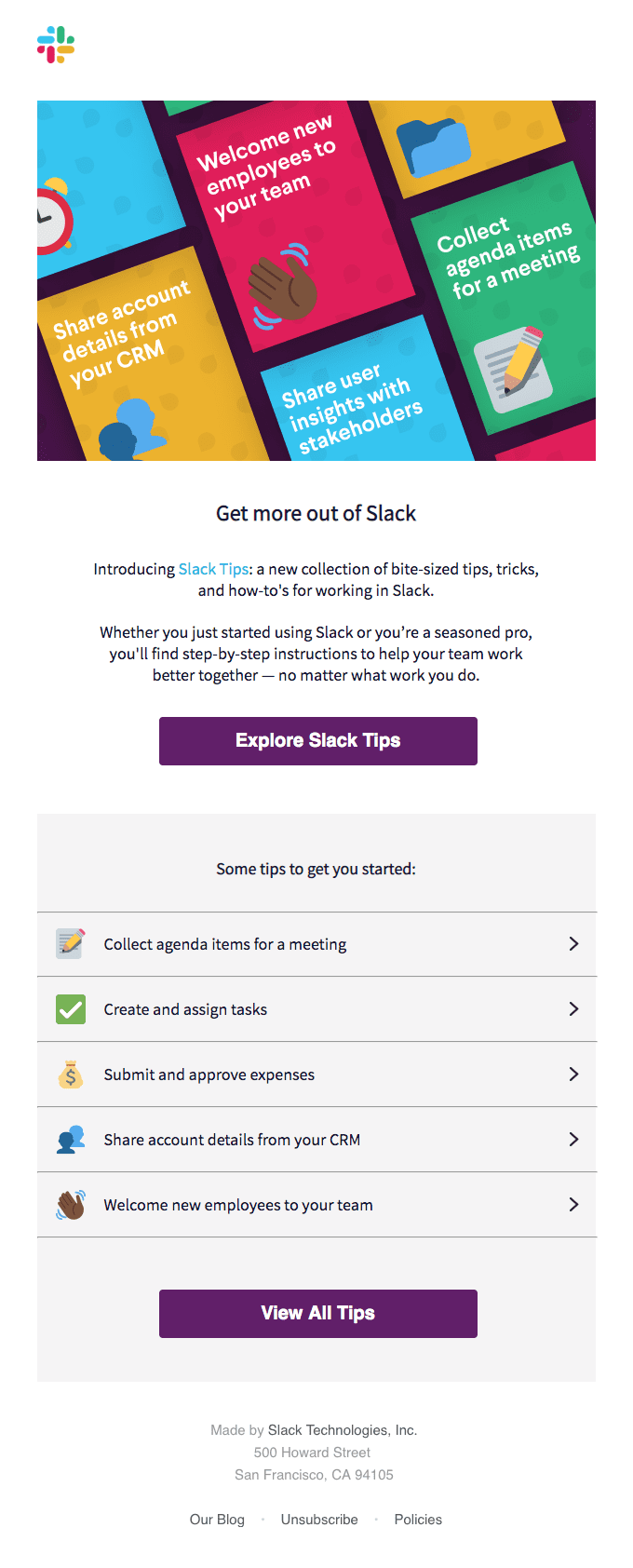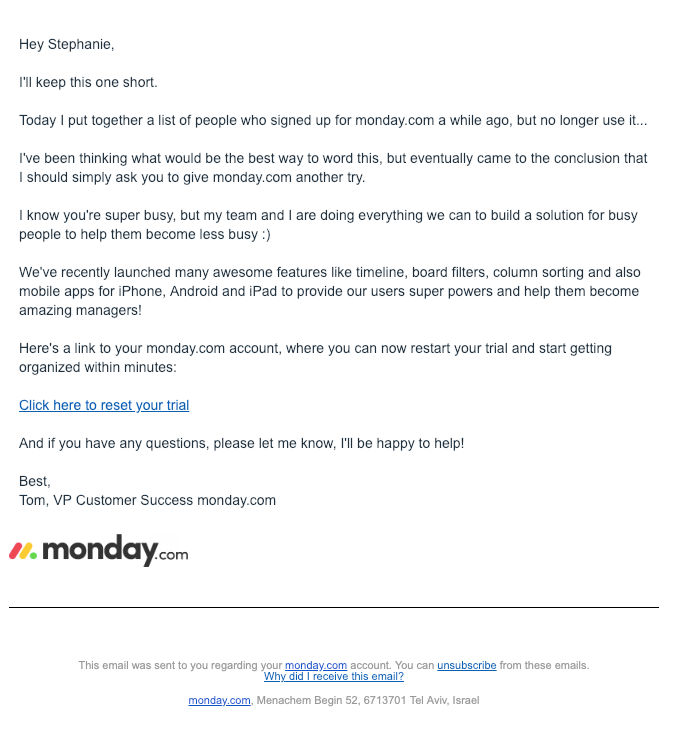Here’s a question for you: What digital marketing channel yields the greatest return on investment? Regardless of whether you're a B2B, B2C or any other kind of business in-between.
Social media? What about pay per click?
Based on the title of this article, you probably have a hunch that the answer is email. And you’d be right: Email marketing is the most profitable marketing channel there is. For every dollar spent on email, there’s an average return of $38 across both B2C and B2B companies.
Email has even been found to be 40 times more effective at new customer acquisition than Twitter and Facebook combined.
Despite this, there’s a misconception that email, and other marketing channels for that matter, are only effective for B2C companies.
B2B marketers approach marketing with scepticism, often on the belief that business purchases are based solely on reason, numbers and relationships that take time to build. That they’ll never be able to send an email with a special offer and have people part with their cash hours later.
While it’s true that B2B transactions are often less impulsive and sales cycles are longer than for consumer purchases, email lends itself incredibly well to encouraging both types of purchases. By some metrics, B2B email marketing campaigns actually receive better engagement than B2C ones.
So let’s see exactly why email marketing is so powerful for B2B companies and how you can take full advantage of it.
Why Email Marketing Is So Powerful For B2B Merchants
The power of email, regardless of what kind of business it’s being used for, comes down to its ability to reach a highly targeted audience with a tailored message that helps to nurture relationships.
No, you won’t be able to send an email blast and sit back to watch the orders roll in. That strategy hardly works for B2C either. But you will be able to set up a (largely automated) email plan that gently nudges people towards becoming paying customers.
While that customer journey is indeed different and typically longer than for your B2C counterparts, email is still able to help guide your leads every step of the way. To achieve this, there are a few things you’re going to need to do.
How to Achieve Results with B2B Email Marketing
Build Your Email List
It doesn’t matter how great your email marketing strategy is if nobody is receiving your emails. So your first priority is to start collecting email addresses.
Ideally, you’ll already have a decent list of previous customers who have opted in to receiving marketing from you. But they only represent existing customers, to grow your business you’ll also need potential customers to be on your email list.
So how do you grow your email list? Start collecting people’s addresses at events such as trade shows, conferences, etc. You can also set up collection forms and popups to capture emails from website visitors.

Seeing as B2B customers tend to research their decisions more thoroughly, providing an ebook or guide on your industry as an opt-in incentive can do wonders for increasing the number of signups. Such as in the example above. You can even turn this into a paid campaign on relevant social media to really start expanding your email list.
Educate Your Subscribers
Too many B2B marketers object to marketing, on the basis that promotional style messaging won’t work when people in an organisation are making the decision on rational grounds.
All this means however is that you simply have to give your audience what they want—help making their decision.
So set up a welcome series so that when people join your list, they automatically receive several emails containing information about your products. This can include benefits your products have over your competitors’, case studies on how other businesses have used your products and how your products will make business easier for your customers.
The email below from Slack, an enterprise communication tool for businesses, is a great example of a B2B welcome email.

Notice how there’s no hard sell or offer included in the email. All it aims to do is educate the recipient on how to get the most out of their product.
Don’t limit yourself to just welcome emails to educate subscribers though. Whenever you launch a new product or have another announcement, you can also send a manual email newsletter to people on your list to keep them up to date.
Doing so also establishes credibility and shows that your company is dedicated to constantly improving its product. Remember that no B2B company wants to buy something that’s out of date.
Build Relationships with Your Subscribers
In addition to educating your subscribers, you should aim to establish a relationship with them. This is so that when it comes time for them to make a decision, not only are they well educated on what you offer, but your brand is also familiar to them.
Here is where your welcome emails become important again. Just like in the above email from Slack, you shouldn’t go in for the hard sell straightaway. Instead by providing helpful tips and insights, you are building a positive relationship with your audience and building trust in your brand at the same time.
Other ways you can do this as opposed to just educating people is to invite them to follow your brand on social media, attend any events you might be holding and even asking them what they are looking for. Just like with the email below from Booz Allen Hamilton.
Asking people this type of question is also a great way to segment your email list so that you can send them more relevant emails in the future.
For example, if you’re a wholesaler of educational supplies, you could potentially ask your subscribers whether they’re involved with primary or secondary schools, or tertiary institutions like universities and TAFE colleges. With this information, you can then send your subscribers relevant information and offers to the type of institutions they deal with, while not bothering them with irrelevant information.
Keep People Engaged
People’s interest in your business will inevitably wane over time. And repeat customers will sometimes stop purchasing from you abruptly.
Win-back campaigns are very effective emails for exactly these kinds of situations.
These are automated emails that are set up to send after someone has, for example, not placed an order for a certain number of days. Obviously exact time frames are flexible based on your business and customer purchase habits.
The win-back from monday.com below is a great example of this type of campaign.
Not only does it offer to reset the user’s trial free-of-charge, but also talks about new features they’ve added to entice people to come back and check out the changes. The email also manages to reiterate the value monday.com provides businesses with and the pain points they solve.
Notice how the email is also signed off by an individual. This is a subtle way of again building a personal relationship with subscribers as opposed to the email sounding like it was just drafted up by a marketing department. (Even though it almost certainly was).
Final Thoughts
The key to succeeding with B2B email marketing is the same as with B2C or any other kind of email marketing.
By growing your email list to include warm prospects through offering free resources, then building a relationship with your subscribers and establishing credibility by educating them on your business and products, you’ll get people engaged and doing business with you.
Setting up automated campaigns like win-back emails will then help keep people engaged and ensure repeat business.
By implementing this email marketing strategy, you’ll be setting your business up for success with minimal ongoing work required. In other words, email is a low effort, high reward channel.
It’s not often that you find these kinds of wins.
If you haven’t set up your email marketing yet, check out SmartrMail’s 15 day free trial. We integrate seamlessly with Neto and provide strategy support to all users so we’re able to devise a plan better suited for your unique B2B needs.
